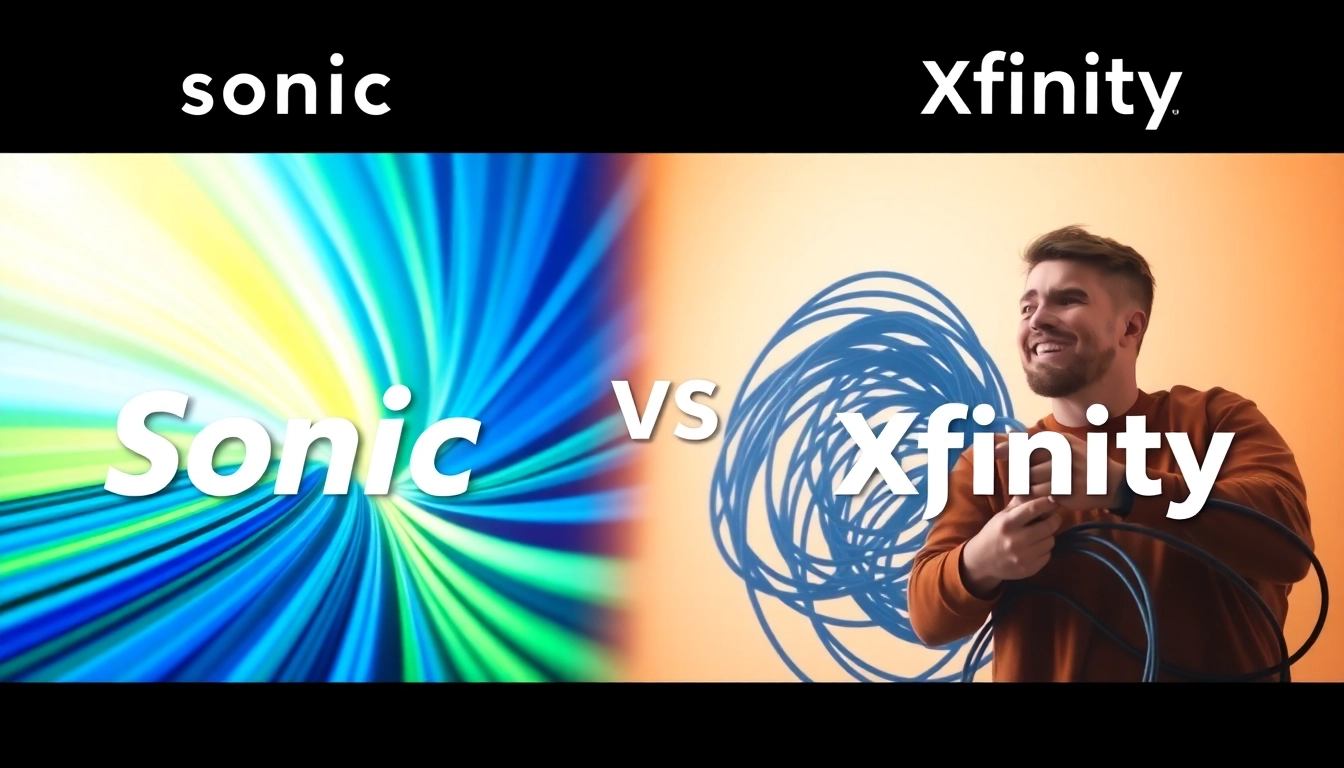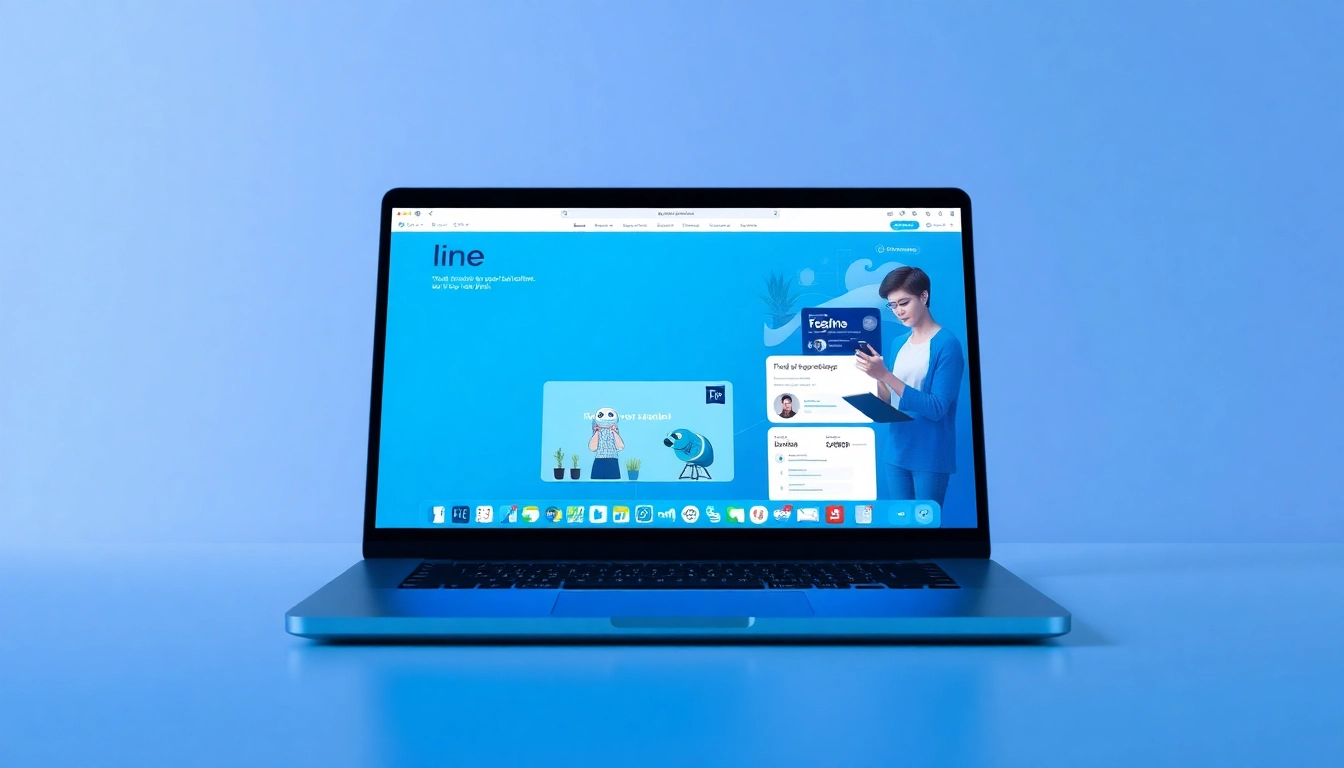Understanding Sonic vs Xfinity Internet Services
Overview of Internet Providers
In today’s digital landscape, the choice of an internet service provider (ISP) can greatly influence your overall online experience. Two prominent names in the broadband industry are Sonic and Xfinity. Each offers a distinct approach to internet service, catering to various customer needs. As users increasingly rely on the internet for everything from remote work to streaming, understanding the specifics of these providers becomes essential. This article delves into the differences and similarities between Sonic and Xfinity, enabling you to make an informed choice for your internet needs. For a detailed examination of sonic vs xfinity, read on.
Key Features of Sonic vs Xfinity
Sonic primarily specializes in fiber-optic internet, offering high-speed connections that are becoming increasingly popular due to their superior performance and low latency. In contrast, Xfinity has a broader range of services, including cable broadband, which might appeal to users looking for flexibility in their internet and television packages.
Key features of each provider include:
- Speed: Sonic’s fiber-optic service boasts higher average speeds for upload and download, often reaching up to 10 Gbps in select areas. Xfinity provides competitive speeds ranging from 50 Mbps to 1200 Mbps, but their upload speeds tend to be lower than Sonic’s.
- Data Caps: Sonic typically offers plans with no data caps, allowing customers to use their internet without estimating their data needs. Conversely, Xfinity’s plans may include data caps, which can result in throttled speeds or additional charges once the limit is exceeded.
- Customer Service: Sonic is often lauded for its customer support, providing various channels for user assistance, including phone, email, and online chat. Xfinity, while improving its service, has historically faced criticism for long wait times and complex support processes.
Target Audience for Each Provider
Consideration of the target audience for each provider can help clarify which option might be best for you. Sonic primarily attracts customers who are tech-savvy and prioritize high-speed internet for activities such as online gaming, large file downloads, and streaming in high definition.
Xfinity, on the other hand, serves a wider range of customers, from families needing reliable internet for multiple devices to individuals looking for budget-friendly options. Its packages often include bundled services, which can be advantageous for those seeking convenience.
Pricing Structures for Sonic vs Xfinity
Monthly Plans Comparison
The pricing structures for both providers can vary dramatically based on the services selected. Sonic’s pricing tends to reflect its fiber technology’s advantages. For example, plans can start around $40 per month for speeds up to 1 Gbps, typically with a straightforward monthly cost and no hidden fees.
Xfinity’s pricing structure is more tiered, with entry-level plans commencing at around $30 per month. However, their prices can rapidly increase depending on the speed and additional services (like television and phone). Customers should carefully assess which plan meets their needs while aligning with their budget.
Hidden Fees and Additional Costs
A key aspect of understanding the true cost of internet service lies in hidden fees. Sonic generally prides itself on transparency, with fewer additional fees beyond its published rates. Some customers report occasional equipment rental fees, but these are minimized compared to traditional ISPs.
Xfinity, meanwhile, has faced criticism in the past for various hidden fees, such as installation fees, equipment rental costs, and early termination penalties. Prospective customers should read the fine print to ensure they fully understand what they are agreeing to before signing a contract.
Discounts and Promotions Analysis
Both providers offer various promotions; however, Sonic often has limited-time offers that can significantly reduce initial costs for new customers. Their pricing strategy focuses on delivering value over time rather than aggressive initial discounts.
Xfinity frequently promotes promotional rates for new subscribers, such as reduced monthly rates for the first year. However, it’s important to note that these promotional prices often revert to standard rates after the introductory period ends, which could lead to higher costs for customers in the long run.
Speed Performance: Sonic vs Xfinity
Download and Upload Speeds
When it comes to speed, Sonic’s fiber-optic internet has a clear edge in terms of both download and upload capabilities. Customers often enjoy symmetrical speeds that allow for seamless streaming and gaming, as well as quick uploads for large files.
Xfinity, although competitive, distinguishes its services with varied speed tiers. Customers might enjoy high download speeds; however, their upload speeds often lag behind, particularly in lower-priced packages, which can be a downside for users engaging in video conferencing or content creation.
Consistency and Reliability in Service
Reliability is crucial in any internet service, as customers need assurance that their connection will remain stable. Sonic, with its fiber infrastructure, typically offers superior reliability, as fiber is less susceptible to environmental factors that can disrupt service.
Xfinity’s reliability can vary significantly based on location. While many customers enjoy consistent service, some areas may experience slowdowns or outages, particularly during peak usage hours.
User Experiences and Reviews
User experiences often serve as a reflection of a provider’s reliability and service. Customers of Sonic consistently report satisfaction with their internet speed and customer service. Many praise the lack of data caps and straightforward pricing.
Xfinity users have mixed reviews, with some enjoying the service paired with television bundles. However, issues like customer service wait times and fluctuating speeds have been commonly reported, influencing overall user satisfaction ratings.
Customer Service Insights: Sonic vs Xfinity
Support Channels Offered
Sonic emphasizes customer care by providing multiple support channels, including telephone support, live chat, and extensive online resources for troubleshooting. Their commitment to customer service is evident in their efforts to resolve issues quickly and effectively.
Xfinity has also improved its support channels by offering live chat, online troubleshooting, and community forums. However, the user experience can be inconsistent, and some customers report long wait times or unsatisfactory resolutions.
Response Times and Satisfaction Ratings
In terms of response times, Sonic has consistently received positive feedback, especially on platforms where customer experiences can be shared. Users often report quick and efficient support, which enhances customer loyalty.
Xfinity’s response time can vary, with a significant number of users expressing frustration over slow responses, particularly during high-demand periods. It is noteworthy that Xfinity continues to make investments in improving its customer service infrastructure.
User Feedback on Customer Support
User feedback highlights the differences in customer service philosophy between the two providers. Sonic’s focus on user experience extends to its customer support, where friendly representatives and effective solutions create a positive narrative.
Xfinity’s customer feedback often centers on mixed experiences, with some users reporting effective support while others mention challenges in navigating the support system. This variance can significantly impact customer retention and recommendations.
Choosing the Right Service: Sonic vs Xfinity
Pros and Cons of Each Provider
The decision between Sonic and Xfinity comes with its own set of pros and cons:
- Sonic:
- Pros: Superior speeds, no data caps, transparent pricing, commendable customer service.
- Cons: Limited availability in some areas, fewer bundled service options.
- Xfinity:
- Pros: Broad coverage, various plan options, bundled services including TV.
- Cons: Variable response times, potential hidden fees, slower upload speeds.
Best Fit for Different User Needs
Determining the best fit for your needs depends on specific criteria:
- For users focusing on upload-intensive activities, such as content creation, online gaming, or video conferencing, Sonic’s offerings may prove more beneficial.
- For families seeking bundled entertainment options or those in need of entry-level broadband, Xfinity might meet their diversified needs.
Factors to Consider Before Choosing
Before making a decision, consider the following factors:
- Location: Coverage can vary significantly based on region. Ensure that your desired provider is available and well-reviewed in your area.
- Speed Requirements: Assess your internet usage. Heavy users may prefer Sonic, while casual users may find Xfinity’s offerings sufficient.
- Support Needs: If customer service is paramount, Sonic’s reputation may provide peace of mind, whereas Xfinity’s mixed reviews might encourage caution.



